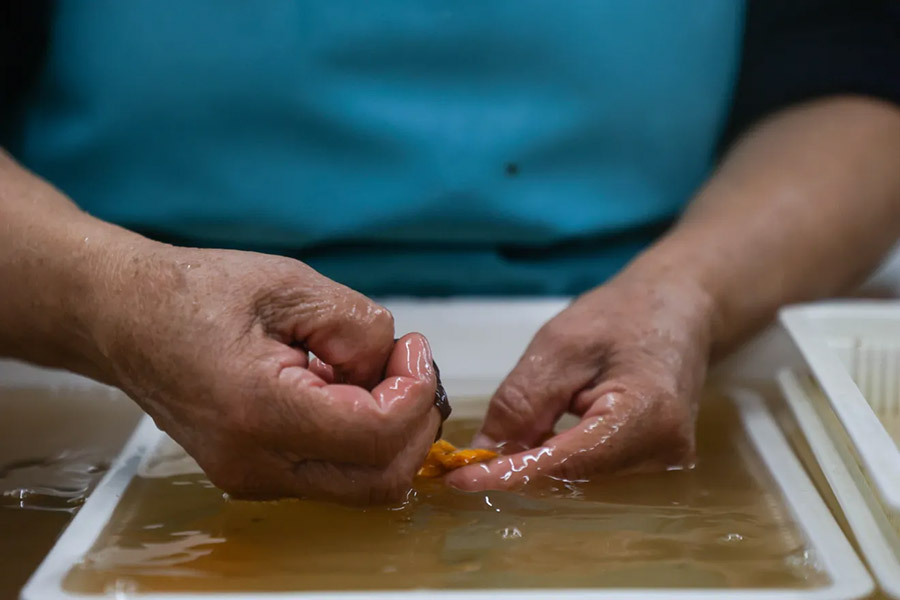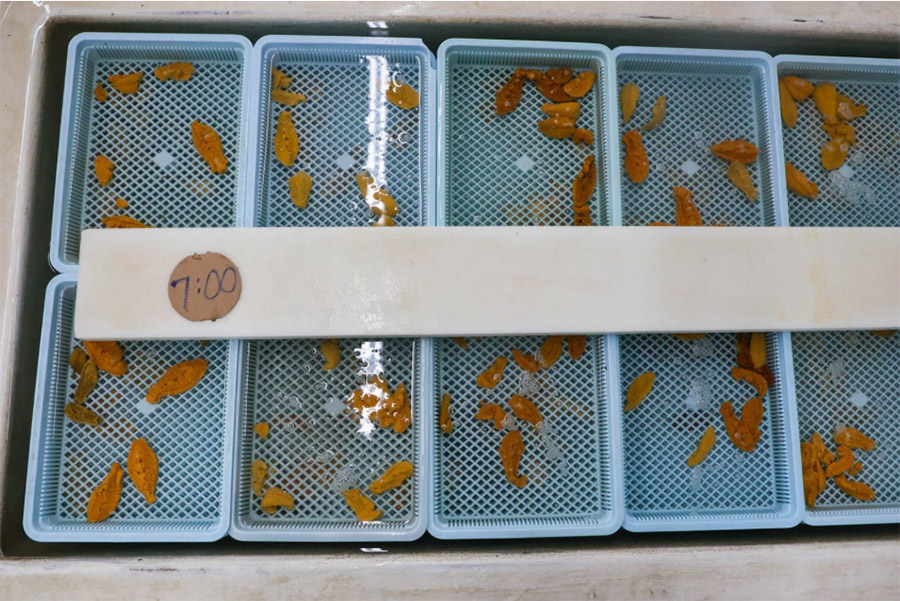SoCal’s beautiful coast has a hidden secret: The ‘barrens’ of climate change
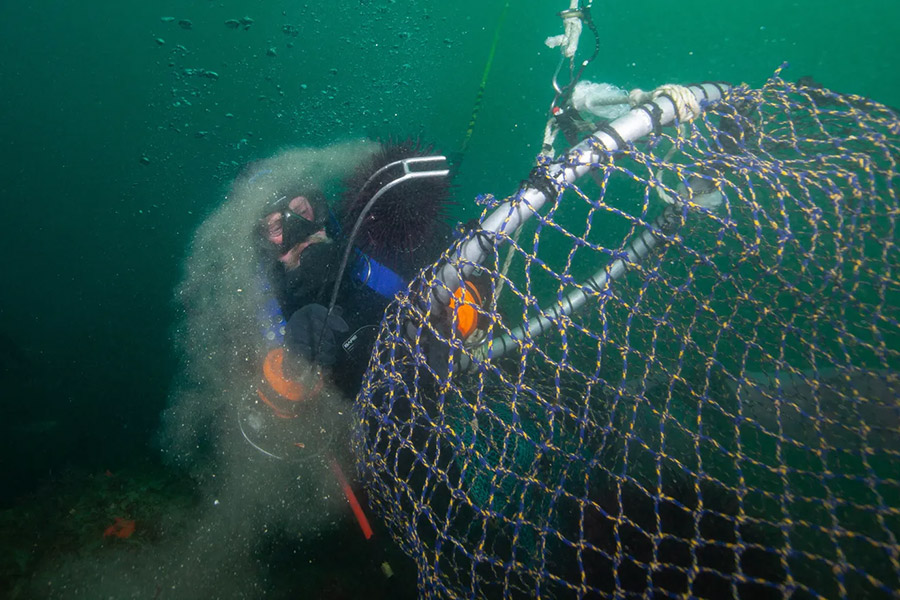
Content pulled from a USA Today web article by Trevor Hughes
The serene beauty of the California coast often conceals the stark realities of climate change, as revealed in a recent article by USA Today. With the captivating allure of its beaches and ocean vistas, it’s easy to overlook the profound impact that environmental shifts have wrought upon this stunning natural landscape.
Visit USA Today’s website to view the full article.
Editor’s note: USA TODAY, with support from the Pulitzer Center, traveled to Alaska, Southern California, Florida and Maine to document climate change’s effects on oceans and the people who fish in them. This report is from California.
ABOARD THE FISHING VESSEL LET IT BE ‒ Diver Matt Pressly broke the water’s surface with a cloud of bubbles and clipped a bag containing a single sea urchin to an orange buoy bobbing beside him in the water off San Diego.
For more than 30 years, Pressly has been diving off the coast of California for sea urchins, sold in sushi restaurants as a delicacy called “uni.” Divers collect both red and purple varieties.
Searchin’ for urchin: SoCal divers face warming waters which drive sea urchins deeper. For more than 30 years, Matt Pressly has been diving off the coast of California for sea urchins, sold in sushi restaurants as a delicacy called “uni.”
In that time, he’s seen urchins move to deeper water in search of the kelp they feed off ‒ kelp that in some cases no longer grows the way it used to. Scientists say hotter water is rapidly changing the ecosystems of California coastal areas. Among the changes: less kelp in shallower areas.
“It used to be that you’d be in deep, deep kelp by now,” Pressly said after catching his breath. “But it’s been gone for five years and hasn’t come back. So I’m having to go out deeper to find the kelp.”
For 30 minutes, Pressly was submerged about 40 feet with a titanium claw, hacking at rocks to loosen and catch the spiny urchins. It’s is a spot he’s dived many times before, but today there’s almost nothing down there. He was also fighting a bad back and an unusually strong underwater current. In other dive spots deeper out, he might collect at least 100 pounds of urchin on a single 45-minute dive.
Pressly’s unsuccessful hunt is just one part of a larger problem facing the United States as climate change warms the world’s oceans and transforms the creatures that live in them. As the oceans get hotter, sea life adapts ‒ and many species that used to be easily fished close to land are fleeing to colder, deeper waters.
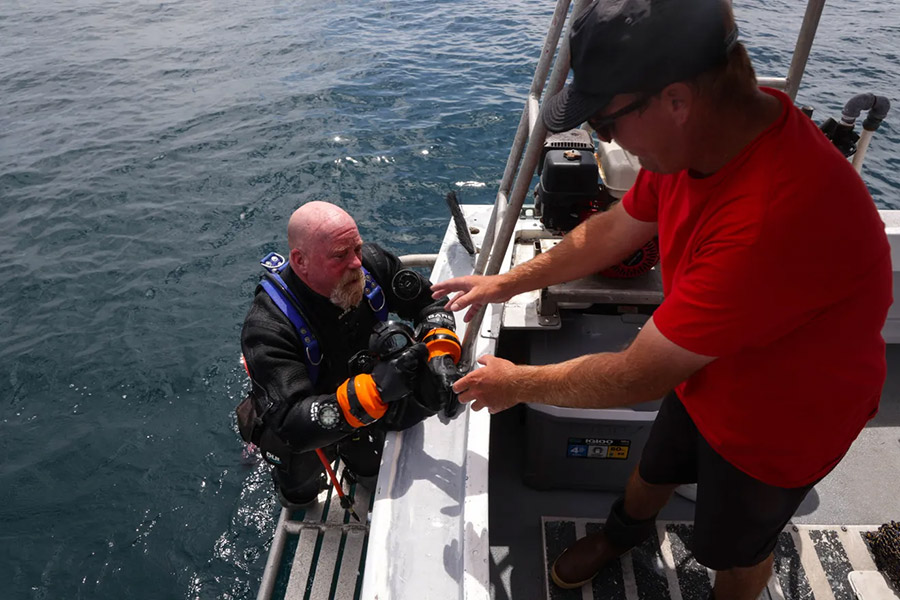
Matthew Pressly, 59, returns from his dive.
In Southern California ‒ among the most studied bodies of water in the world ‒ the interplay of El Niño, warmer water and competition among native species suggests climate change may not just create losers, and that some species may thrive under the new conditions.
Off San Diego’s coast, underwater kelp forests are diminishing due to climate change and other factors, but resilient urchins are still thriving for now.
Warming waters
USA TODAY partnered with the Pulitzer Center to document how climate change is rapidly disrupting ecosystems and the lives of people who fish in America’s oceans. We traveled aboard fishing boats, interviewed dozens of experts and talked to people who depend on the sea for their livelihood. Already facing the natural rhythms of the ocean, evolving economics and rising fuel prices, warming water adds to their already uncertain future.
Water getting hotter
Sea urchins are renowned for their ability to scour the bottom for anything to eat and can survive a decade without food. But changes in water temperature along the West Coast are throwing the ecosystem out of whack.
Warm waters seem to kill kelp faster than sea urchins, causing some kelp forest areas to become underwater deserts, cooked by warm water and picked over by the urchins. Studies indicate that while warmer water affects urchin reproduction, they may be less affected than other species, including kelp.
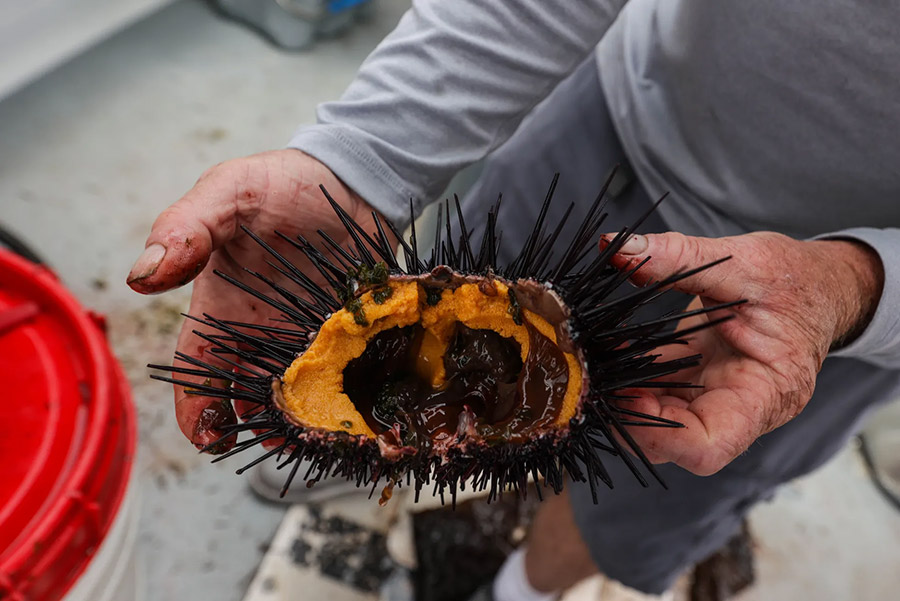
Matthew Pressly opens up a sea urchin.
Oceanographers say there’s been an 80% loss of kelp across a 25-mile-wide section of the Southern California coastline they’ve studied over the past 40 years. Scientists have been warning for years these sea urchin-caused “barrens” or deserts pose a risk to marine biodiversity, especially when combined with the larger impacts of climate change.
They attribute the initial kelp loss to extremely high water temperatures starting around 2014. This year the water all along the West Coast is again unusually hot, although it’s actually slightly cooler than normal in a tiny area around San Diego. Other experts say pollution running off the land, along with El Niño cycles, are contributing to the kelp die-offs.
Fisheries expert Lyall Bellquist said ocean ecosystems are expected to get worse. The oceans have been absorbing excess heat caused by heat-trapping gases in the atmosphere, and that hotter water appears to be increasingly causing cascading effects. Mass species die-offs, unusually powerful storms and high storm surge, and high water temperatures represent the first and most visible changes.
“Climate change isn’t just affecting the oceans in a long, gradual way. Climate change is affecting the oceans now in a way we can see in our day-to-day lives,” said Bellquist, a senior fisheries scientist with The Nature Conservancy’s California Oceans Program, who works at the Scripps Institution of Oceanography. “These extreme events are affecting people’s day-to-day lives all over the world.”

SOURCE © Mapcreator.io | © OSM.org, USA TODAY
From pest to delicacy
Sea urchin is a relatively niche market, with virtually all of it sold to U.S. sushi restaurants. Dave Rudie, who started urchin diving off San Diego in the early 1970s, said processed uni back then was shipped to Japan.
Before that, companies that commercially harvested kelp for use in cosmetics and other products simply killed the urchins if they moved into an area by dumping quicklime into the ocean. Over time ‒ and under legal pressure ‒ kelp harvesters stopped killing the urchin, allowing divers like Rudie and Pressly to harvest them by hand. Today, Rudie runs Catalina Offshore Products and buys most of the urchin harvested by divers in the San Diego area.
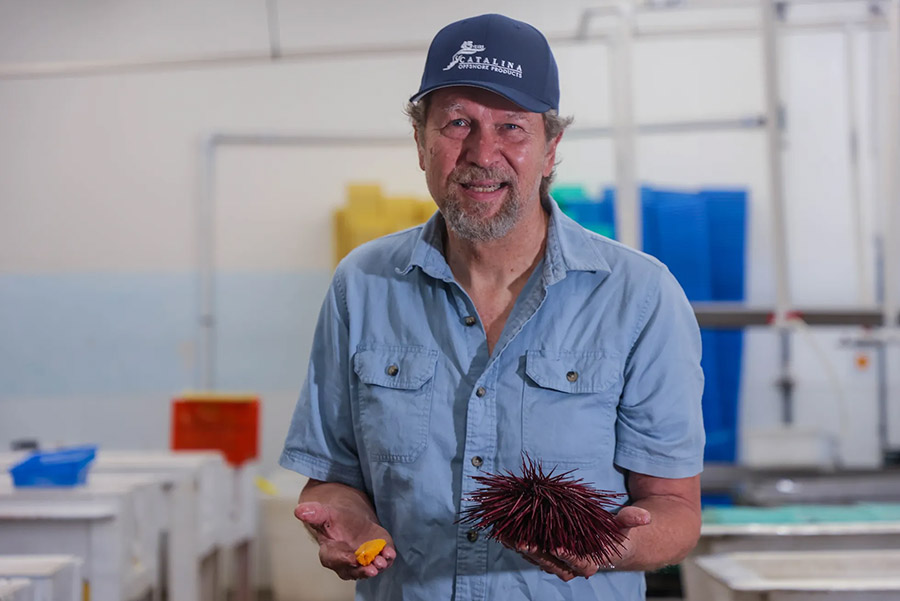
David Rudie, president of Catalina Offshore Products, holds a fresh piece of uni and a sea urchin in his warehouse in San Diego.
Rudie helped establish sea urchin harvesting as an industry and now he’s watching it weaken following the unusually hot water of 2015 and 2016. Although urchins can survive for years without eating, the loss of kelp appears to be affecting the number of urchins living in the area.
“Warm water will kill a lot of things,” Rudie said. “When the last El Niño hit we went from doing 10 million pounds a year to 2 million pounds a year.”
Species loss
Kelp is a keystone of the ocean environment, providing food and shelter for multiple species. But it’s also highly valuable for those who live on land. Because it grows so rapidly, kelp and other seaweeds are among the best absorbers of heat-trapping carbon dioxide, along with nitrogen and phosphorus.
Once harvested, kelp and other seaweeds can be used as both human and animal food. Certain seaweed extracts also are unusually effective at reducing methane emissions by cows ‒ an initiative backed by billionaire Bill Gates aims to determine the best recipe.
Changing what we eat
For restaurateur Sam King, who buys urchins from Rudie, the changes in seafood availability are challenging. While his restaurants have long offered seasonal specials, the unexpected inability to get consistent supplies of king salmon from Alaska or lobster from Maine has been frustrating. King’s restaurants have also started incorporating urchins into more dishes than just sushi.
Oysters have also been in short supply, but that may be because some oyster farmers didn’t reseed their beds during the pandemic, King said. Ocean acidification, which hurts the growth of young oysters, may be compounding the problem.
King tries to tease out what’s a true seasonal variation from the echoes of COVID-19 supply chain issues and the bigger picture of climate change impacts.
“That’s the big question. Climate change is such a big topic that it’s sometimes difficult to wrap your arms around it,” he said. “When you talk about whether climate change is altering things, obviously the answer is yes – it’s having some effect.”
King said the changes in what’s available have challenged his chefs to get creative with ingredients. For instance, while uni used to be limited largely to sushi, now some chefs are adding it to sauces and other dishes to bring a fresh seawater taste. And he’s been shipping in warm-water lobster from Australia instead of offering American lobster because it’s cheaper due to ongoing international trade disputes.
“We’re going to have to figure out what we’re going to do, how we’re going to replace things,” he said.
‘Like gold mining’
Back on the Let It Be, Pressly takes a breather and chats with deckhand Mark Lasher. Lasher is normally a charter fishing boat captain, but the fishing this year has been so bad he felt guilty charging tourists he knew would catch nothing.
California officials in August noted the surface sea temperature along the state’s 840-mile-long coastline has risen faster off San Diego than anywhere else.
Later this year, Lasher planned to help Pressly dive for urchins and sea cucumbers in the colder waters off Alaska, where they grow bigger and thus fetch a better price. Sea cucumbers are dried and sold to customers in Asia.
Pressly groaned a little as he stretched out his stiff back and soaked up the summer sun. He wriggled out of his drysuit and said he can see the changes around him – the loss of kelp, the loss of lingcod, the starfish die-offs. But as long as there’s urchin, he’ll keep scouring the ocean floor.
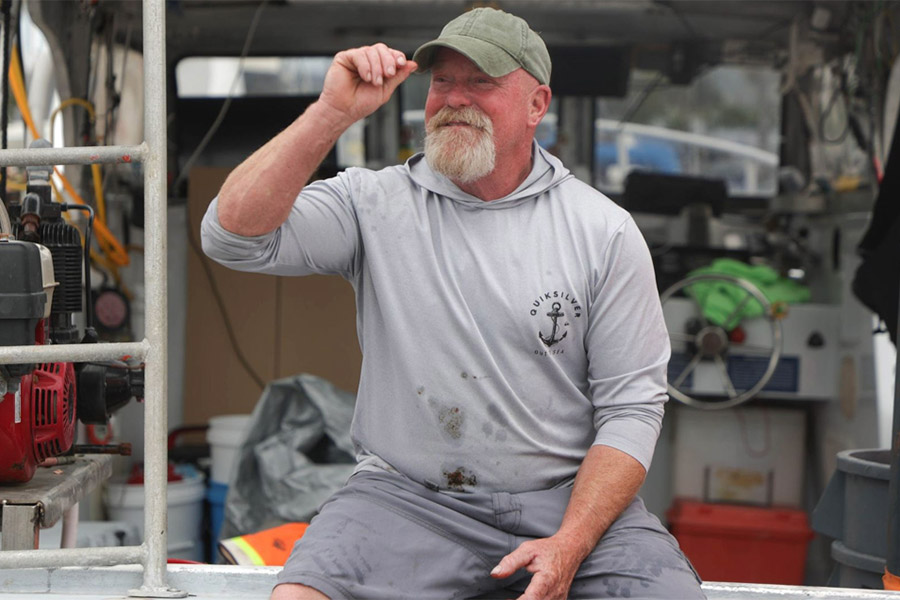
Mark Lasher, 36, hauls in sea urchins that were collected off the coast of San Diego.
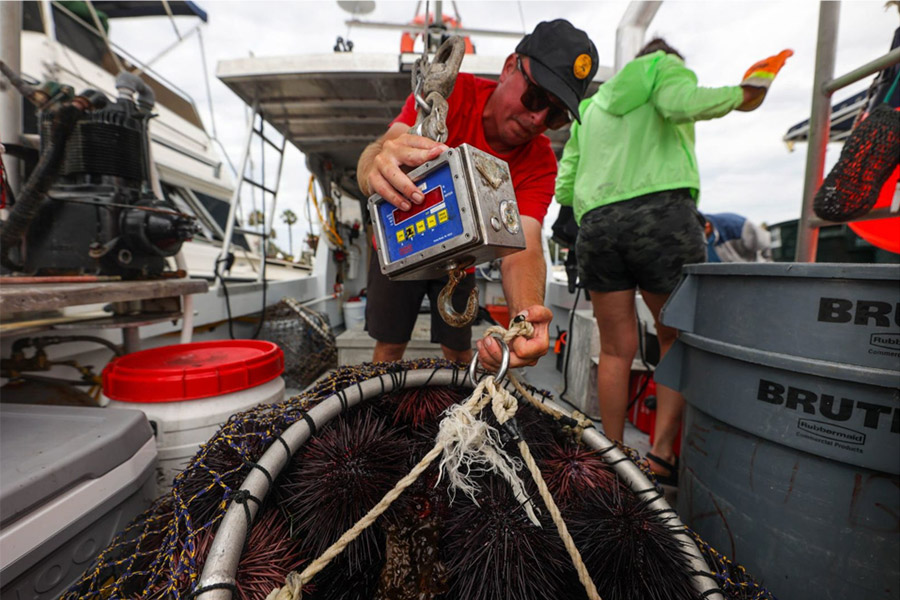
Matt Pressly, 59, who has been an urchin diver for 35 years, sits on his boat.
“That’s a bagful of hurt right there,” he said, gesturing to his 100-pound haul of the spiny sea creatures floating in a net bag attached to a buoy. “Took a lot to get it.”
Urchin diving requires a state permit, and the number of active divers has been declining for decades. Few young people want to get into the business, and Pressly, who is 59, believes himself to be one of the youngest divers.
“It’s obviously changing, in so many different ways. But my particular fishery seems to be resilient,” he said. “It’s like gold mining ‒ you just never know when you’re going to hit the mother lode, and so you get gold fever. I’ll be doing this until I physically can’t anymore.”


